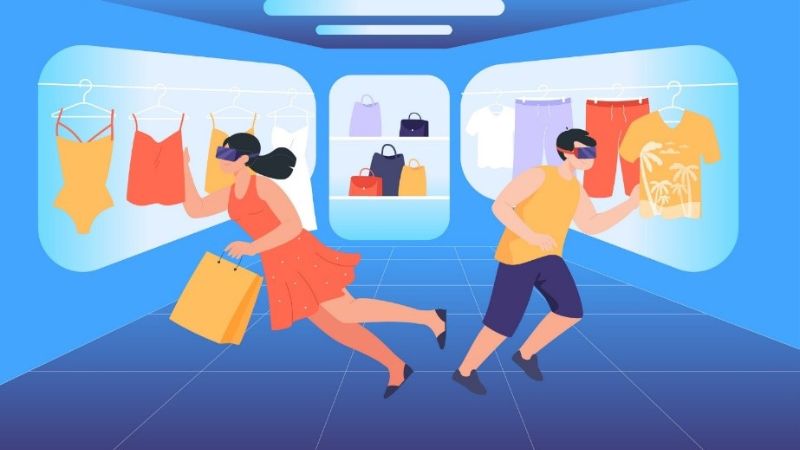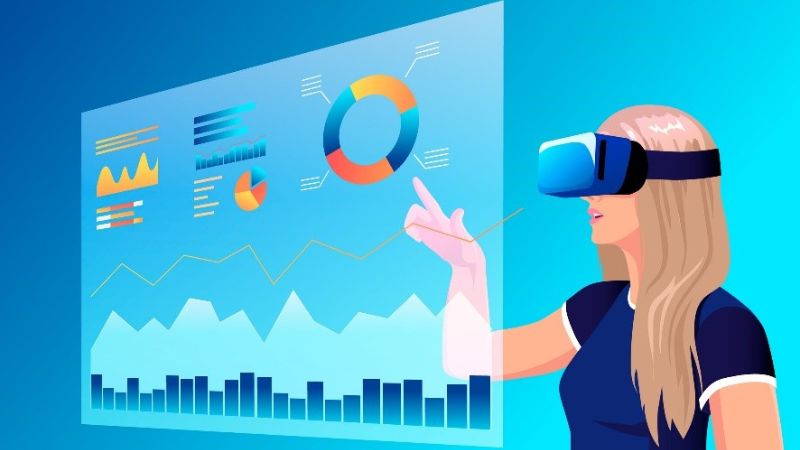In the ever-evolving marketing and retail landscape, Virtual Reality (VR) has emerged as a genuine difference maker, offering businesses innovative ways to engage with consumers. Statistics show that 71% of consumers think brands using VR are forward-thinking. As technology advances, integrating virtual reality applications into marketing strategies and the retail environment is set to redefine how we shop and interact with brands.
The Present State of Virtual Reality in Marketing
Marketers are increasingly recognizing the potential of VR to create immersive and unforgettable experiences for consumers. According to recent studies, the global VR market is expected to reach $92.31 billion by 2027, indicating a significant growth trajectory. Brands are using this technology to stand out in a crowded digital marketplace and connect with audiences on a deeper level.
VR is Reshaping the Traditional Brick-and-Mortar Experience
Retailers are seeking ways to bring the immersive aspects of physical stores to a digital platform. VR provides a solution by creating virtual storefronts that mimic the in-person shopping experience. For example, clothing stores are implementing VR dressing rooms that allow customers to try on different outfits virtually.
This innovative approach enhances the convenience of online shopping and adds a new layer of engagement, transforming the digital shopping experience into a dynamic and interactive journey.
Future Trends of Virtual Reality Applications
Virtual reality applications are set to become even more sophisticated, with several trends shaping the future of marketing and retail that business owners must watch closely.
Personalized Shopping Experiences

VR will enable brands to tailor shopping experiences based on individual preferences and enhance the overall customer experience. Imagine a virtual store that adapts its layout and product recommendations in real time. It creates a personalized journey for each customer, from virtually trying on glasses and clothes to viewing 3D furniture modules in your home.
Virtual Brand Activations
Brands will increasingly host virtual events and product launches, allowing consumers to participate from the comfort of their homes. These experiences further expand your business’s ability to be a player in the global marketplace. Creative and interactive campaigns allow for new levels of interaction with customers and command your target audience’s attention.
Social VR Shopping Experiences
Collaboration between VR, social media platforms, and other outlets leads to more social VR shopping experiences. Consumers can shop with friends in a virtual space, making the online shopping experience more social and enjoyable. Virtual store platform Obsess offers a prime example of this concept. It allows customers to engage in live video streaming with each other as they shop together in virtual storefronts.
Enhanced Analytics

VR analytics will give businesses valuable insights into customer behavior within virtual environments. This data can be used to assess the success of your VR campaign and define specific key performance indicators (KPIs). You’ll be able to evaluate user engagement, the duration of VR experience, and conversion rates to measure the campaign’s effectiveness.
Prepare to Take Full Advantage of this New Reality
As virtual reality applications evolve, businesses need to embrace this new medium and integrate it into their marketing strategies. To maintain a competitive edge, it is crucial to seize the opportunities offered. Explore the possibility of hiring a digital marketing company such as Fat Guy Media to assist in developing impactful strategies tailored to your company’s needs.


